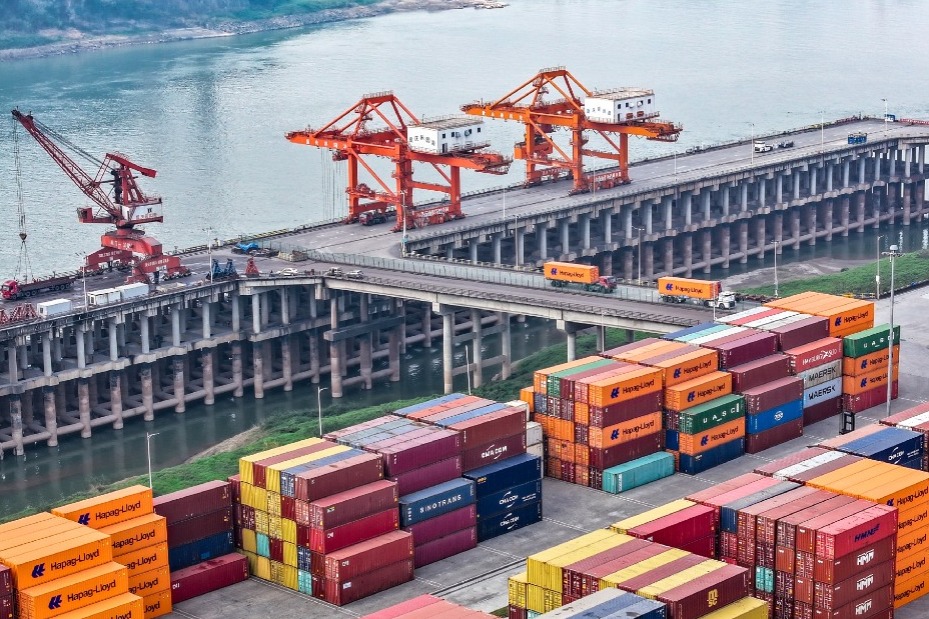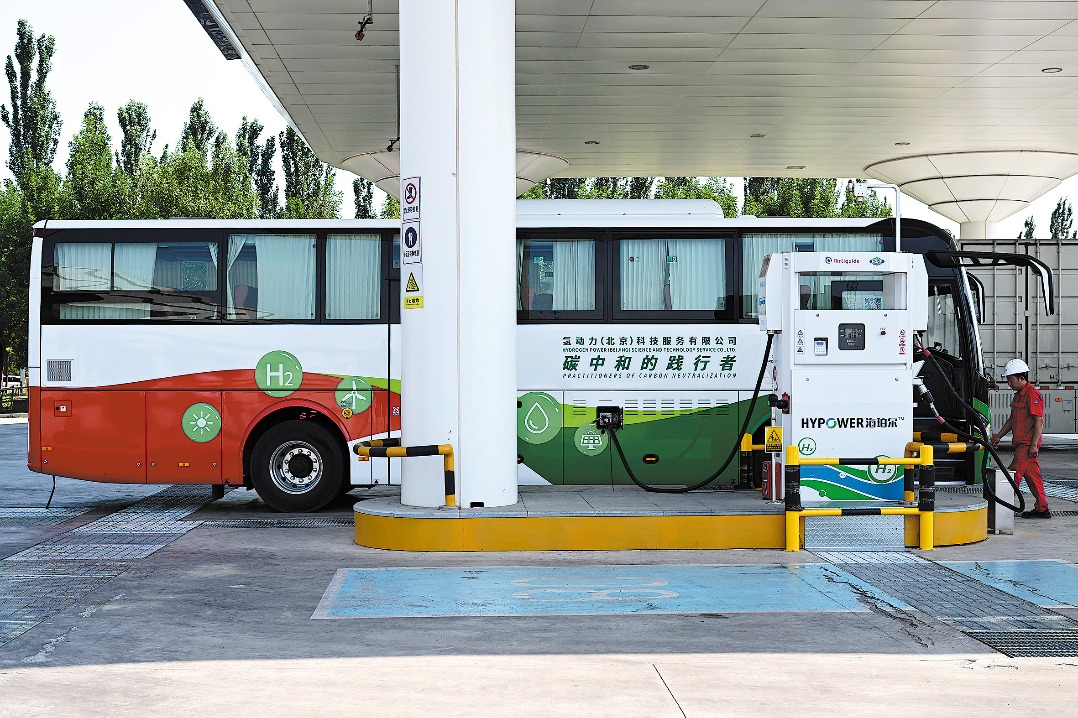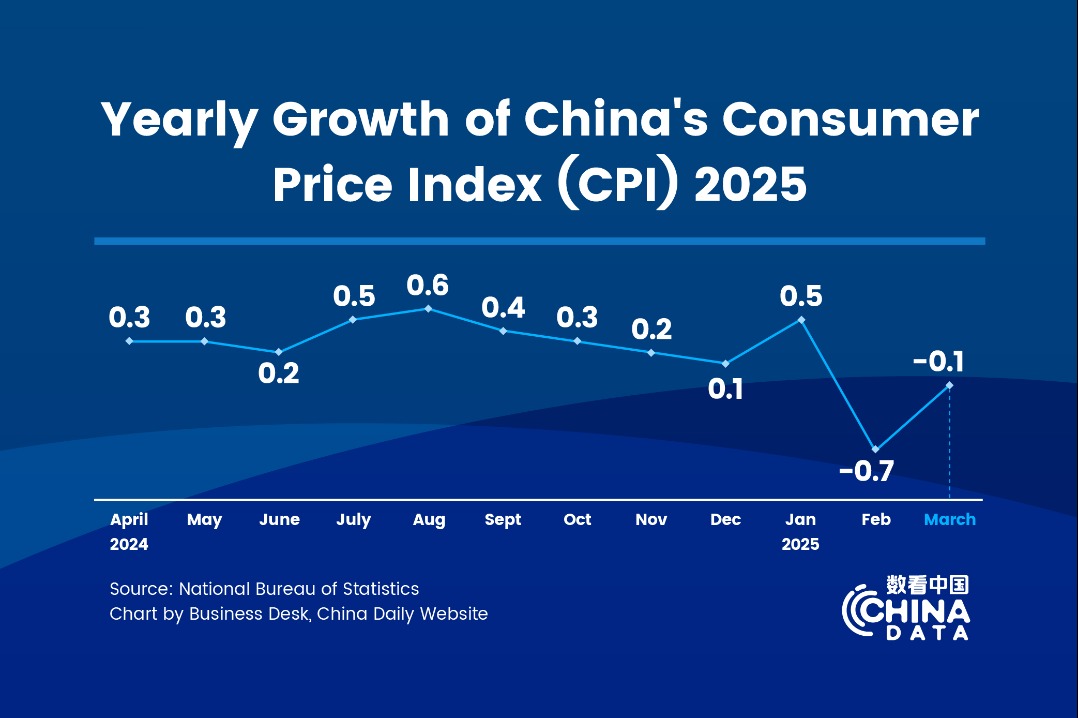Fossil fuels sector adapts to evolving energy landscape


China's oil and gas sector is pro-actively adapting to a changing energy landscape, balancing stringent carbon emissions targets with the crucial need for energy security, according to industry experts.
As domestic petroleum demand nears its peak, the sector is actively forging a modern oil and gas industry that harmonizes energy security with a green, low-carbon transition, said Wu Mouyuan, vice-president of the Economics and Technology Research Institute under China National Petroleum Corp.
"China's oil product consumption entered a turning point in 2024, marking the end of years of steady growth," said Wu during a recently held summit in Beijing.
Gasoline, diesel and kerosene, the three major refined oil products, account for more than half of China's total petroleum consumption and largely dictate the overall trend of oil demand. As refined oil consumption has begun a downward trajectory, China's total oil consumption is also nearing its peak, he said.
Wu projects this peak to occur most likely during the first half of China's 15th Five-Year Plan period (2026-30), namely from now on to 2027, reaching approximately 770-790 million metric tons annually, slightly above the 756 million tons consumed in 2024.
The institute believes a shift in economic development models, an efficient integrated transport system and the rapid adoption of cleaner transport have steadily slowed the growth of refined oil consumption.
Notably, the explosive increase in new energy vehicles since 2021 has curbed gasoline demand, while the increasing cost-effectiveness of liquefied natural gas for heavy-duty trucks has accelerated the substitution of diesel, Wu said.
Ye Lin, vice-president of commodity markets research at global consultancy Rystad Energy, said China's demand for major transportation fuels showed minimal growth in 2024, as the rapid shift toward electric vehicles reduced gasoline consumption.
Demand for diesel, with the continuous transformation of China's economic growth model, has flattened and peaked in recent years, while the accelerated penetration of LNG trucks posted extra pressure on diesel demand from 2023 and contributed to diesel demand declines in 2024, she said.
Data released by the CNPC institute estimates that NEVs and LNG heavy trucks together displaced nearly 53 million tons of gasoline and diesel consumption in 2024, leading to an overall decline of 2.4 percent year-on-year in refined oil consumption compared to 2023.
This trend is expected to continue as NEV adoption accelerates and LNG retains its competitive edge over diesel, despite continued growth in jet fuel demand, which only accounts for a small portion of overall refined oil consumption.
The evolving landscape is driving a structural shift in China's oil consumption during the 15th Five-Year Plan period, characterized by "refined oil decline and chemical feedstock increase," Wu said.
While demand for gasoline and diesel is projected to fall significantly, by nearly 85 million tons by 2030 compared to 2024, driven by NEV and LNG substitution, demand for oil-based chemical feedstocks is expected to maintain medium-speed growth, increasing by over 46 million tons by 2030, particularly fueled by demand for new chemical materials, he said.
In response to these pressures, China's oil and gas sector is focusing on building a modern oil and gas industry, defined as an expansion and upgrade of the traditional sector, Wu said.
This includes not only the clean and low-carbon transformation of conventional oil and gas but also the vigorous development of green and new oil and gas industries, such as hydrogen-based fuels, biofuels, and e-fuels.
Despite the peak in refined oil demand, the sheer volume of oil and gas needed soon necessitates continued efforts to enhance traditional oil and gas supply capacity for energy security.




































